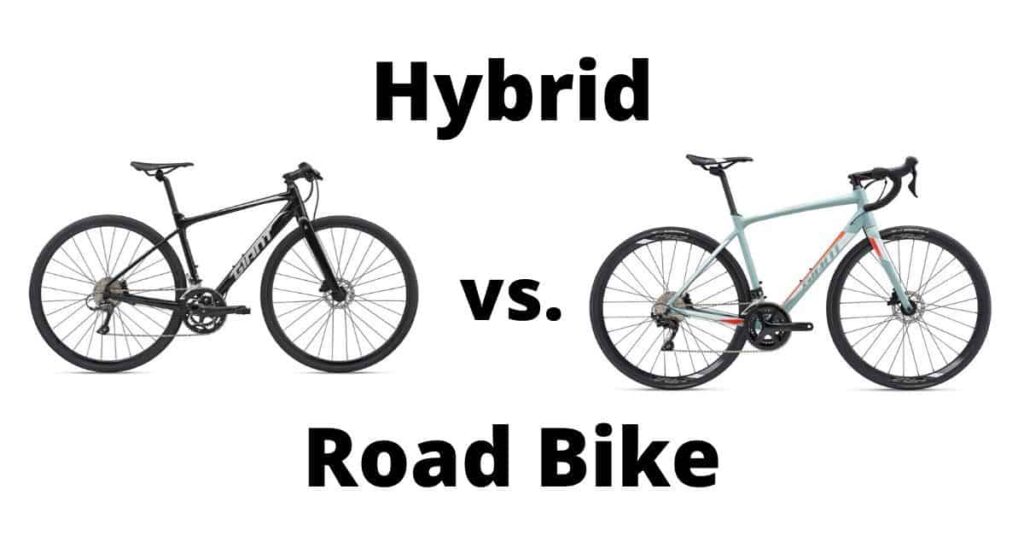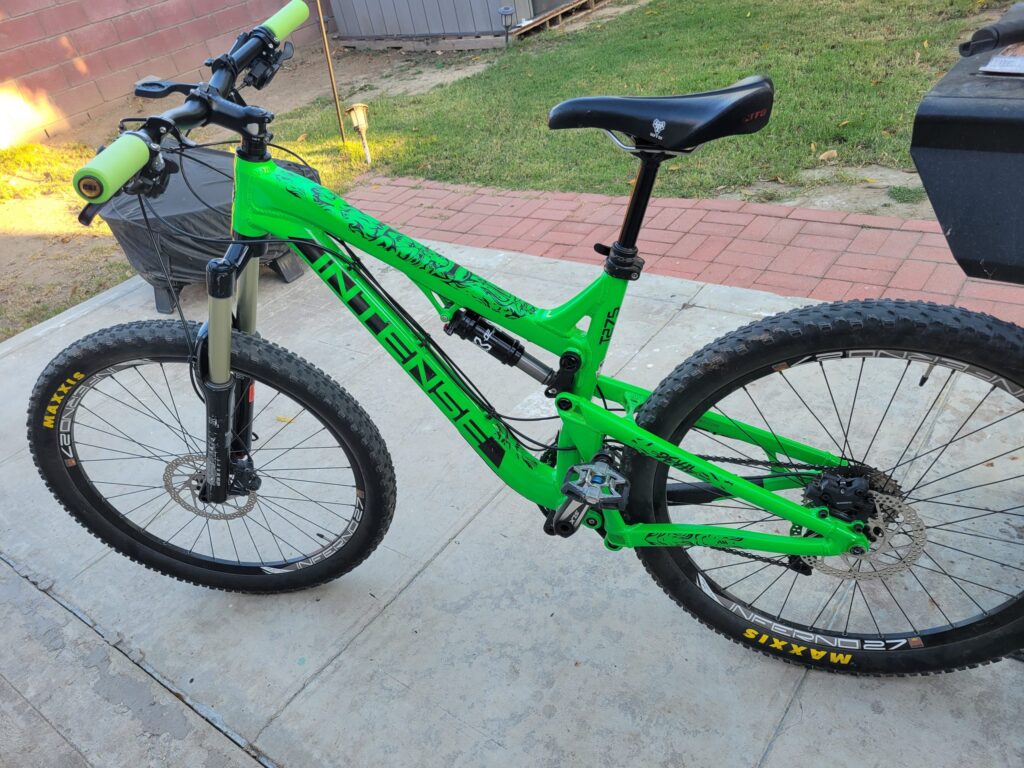Road bikes are faster than hybrid bikes. They offer speed due to their design.
But how much faster are they really? Understanding the difference can help you choose the right bike for your needs. Road bikes are built for speed and efficiency. They have narrow tires and lightweight frames. This makes them ideal for racing and long-distance rides.
On the other hand, hybrid bikes are versatile. They combine features of road and mountain bikes. Hybrids are great for casual rides and commuting. Comparing these bikes helps you decide which suits your lifestyle. Speed might matter for some, while comfort and versatility might be more important for others. Exploring the differences can guide your choice, ensuring you pick the best bike for your cycling adventures.
Speed Differences
When you’re deciding between a road bike and a hybrid, speed is often a key factor. Road bikes are renowned for their swift performance, but just how much faster are they compared to hybrids? Understanding the speed differences can help you choose the right bike for your needs. Let’s dive into the specifics.
Factors Influencing Speed
The speed of a bike isn’t solely determined by its type. Multiple factors come into play. Consider the weight of the bike. Road bikes are generally lighter, which contributes to higher speeds. A lighter bike can move faster with less effort.
Next is tire design. Road bikes have narrow tires with smooth treads, reducing rolling resistance. You’ll notice how effortlessly you can glide on a road bike compared to the wider, textured tires of a hybrid.
Gear ratios also matter. Road bikes often have higher gear ratios, allowing for faster speeds on flat terrains. If you’re aiming for efficiency, gear selection can make a significant difference.
Typical Speed Metrics
Let’s talk numbers. On average, road bikes can clock speeds of 15-20 mph (miles per hour) on flat roads. Hybrids, on the other hand, typically reach 12-15 mph.
You might think the difference is minimal, but over a long distance, those extra miles per hour add up. Imagine a 20-mile ride; a road bike might save you 20 minutes compared to a hybrid.
But, it’s not just about the top speed. Road bikes maintain higher speeds with less effort. If you plan to cover long distances, this efficiency can make your ride more enjoyable.
Have you ever noticed how a slight change in gear can make your ride smoother? Or how a lighter bike feels like you’re flying? These are the subtle yet impactful differences between road bikes and hybrids. What’s your priority—speed or comfort? Your answer might just point you to the perfect bike.

Credit: se.pinterest.com
Design And Aerodynamics
Design and aerodynamics play a crucial role in bike speed. Road bikes and hybrid bikes have distinct designs. These differences affect their speed and performance. Understanding these aspects can help you choose the right bike.
Frame Structure
Road bikes have lightweight frames. They are often made from carbon or aluminum. This reduces drag and enhances speed. The sleek design allows efficient energy transfer. Hybrid bikes have a sturdier frame. They offer more comfort for casual rides. Their frame is often heavier. This impacts speed on flat surfaces.
Handlebar Design
Road bikes feature drop handlebars. These allow various hand positions. Cyclists can lower their profile while riding. This design improves aerodynamics significantly. Hybrid bikes have flat handlebars. They provide a more upright riding position. This makes them less aerodynamic. Riders experience more wind resistance. Thus, road bikes are faster in this regard.
Weight And Components
Understanding how weight and components affect speed helps choose the right bike. Road bikes and hybrid bikes differ significantly in these aspects. This difference impacts their overall performance and efficiency on various terrains.
Material Choices
Road bikes often use lightweight materials like carbon fiber or aluminum. These materials reduce the bike’s weight, enhancing speed and agility. Hybrid bikes might use heavier materials like steel or a mix of aluminum and steel. The extra weight can slow down the bike, especially on uphill paths.
The lighter frame of road bikes makes them faster on flat surfaces. This advantage is crucial for competitive cycling and long-distance rides. Hybrid bikes offer more durability, making them suitable for urban commuting and casual rides.
Gear Mechanisms
Road bikes feature advanced gear systems for smooth transitions during rides. These systems allow cyclists to maintain a consistent speed, even on steep climbs. The gear ratios are designed for speed and efficiency on paved roads. Hybrid bikes have simpler gear mechanisms, suitable for varied terrains.
The gear setup in hybrid bikes is versatile. It accommodates different riding conditions, but might not offer the same speed efficiency as road bikes. The simpler gears of hybrid bikes make them user-friendly for beginners. Road bikes require skill to maximize gear use for speed.
Tire And Wheel Considerations
When comparing road bikes and hybrid bikes, tires and wheels make a difference. The design and specifications of these components influence speed. Road bikes are often faster due to particular tire and wheel setups. Understanding these elements helps in choosing the right bike.
Tire Width And Pressure
Road bikes have narrow tires. Typically between 23mm and 28mm wide. This reduces rolling resistance. Narrow tires roll with less friction. Hybrid bikes have wider tires. Generally ranging from 32mm to 42mm. Wider tires offer stability and comfort. But they increase rolling resistance. Tire pressure also affects speed. Road bike tires are inflated to higher pressures. Usually around 80 to 120 PSI. This makes them firm and fast. Hybrid bike tires have lower pressure. Typically between 40 to 70 PSI. Lower pressure improves comfort but slows down the bike.
Wheel Size And Type
Road bikes usually feature 700c wheels. These are large and efficient. They maintain speed well. Hybrid bikes may have 700c or 26-inch wheels. Smaller wheels affect speed negatively. The type of wheel also matters. Road bike wheels are lightweight. They are designed for speed. Hybrid bike wheels are sturdier. Built for mixed terrain and durability. The materials used differ too. Road bike wheels often use aluminum or carbon fiber. These materials are lighter. Hybrid bike wheels may use steel or heavier alloys. This adds to the weight and reduces speed.
Rider Experience
Road bikes typically offer quicker speeds than hybrids due to their lightweight frames and aerodynamic design. They are built for speed on smooth surfaces, while hybrids are more versatile, handling various terrains efficiently. This makes road bikes a better choice for riders focused on speed and performance.
Riding a bike is not just about getting from point A to B; it’s an experience that engages all your senses. When comparing road bikes to hybrids, the rider experience can be significantly different. Each bike offers unique advantages that can enhance your cycling journey, depending on what you’re looking for.
Comfort Level
Comfort is crucial for any ride, whether it’s a quick commute or a long-distance adventure. Hybrid bikes are designed with comfort in mind. They often have wider seats and upright handlebars, allowing you to ride in a more relaxed position. This can make your journey more enjoyable, especially on rough terrain or longer trips.
On the other hand, road bikes prioritize speed and efficiency, which can sometimes come at the expense of comfort. Their narrow seats and drop handlebars put you in a forward-leaning position, which can be uncomfortable for some. However, this position is more aerodynamic, helping you cut through the wind and ride faster.
Have you ever thought about how much comfort you’re willing to sacrifice for speed?
Riding Position
Your riding position can greatly affect your speed and experience. On a road bike, you’re positioned more aggressively. This helps you maintain higher speeds but might require you to have some flexibility and core strength. If you’re used to leisurely rides, this might take some getting used to.
Hybrids, however, allow you to sit more upright. This position is less strenuous on your back and arms, making it easier for those new to cycling or returning after a break. You might not go as fast as on a road bike, but the relaxed posture can make your ride more pleasant.
Think about how your riding position impacts your overall experience. Are you ready to lean forward for a bit more speed, or do you prefer sitting up straight to enjoy the scenery?
Choosing between a road bike and a hybrid often comes down to what you value in your ride. By understanding these key differences in the rider experience, you can make a more informed choice that aligns with your cycling goals. What matters more to you: speed or comfort?

Credit: medcycletour.interreg-med.eu

Credit: www.roadbikerider.com
Frequently Asked Questions
Is A Road Bike Faster Than A Hybrid Bike?
Yes, road bikes are generally faster than hybrid bikes. Their lightweight design and aerodynamic features enhance speed. Road bikes have thinner tires and a more aggressive riding position, offering less rolling resistance and increased efficiency on paved surfaces. This makes them ideal for speed-focused cycling.
Do You Go Faster On A Road Bike?
Yes, road bikes are designed for speed on paved surfaces. They feature lightweight frames and narrow tires for reduced resistance, enabling faster rides compared to other bike types. Their aerodynamic design also enhances speed, making them ideal for long-distance and competitive cycling.
Is 20 Mph On A Road Bike Good?
Cycling at 20 mph on a road bike is considered a good speed for most riders. It reflects a strong fitness level and efficient cycling technique. Regular practice and proper equipment can help achieve this pace consistently. Always prioritize safety and wear appropriate gear while riding.
Conclusion
Choosing between a road bike and a hybrid boils down to needs. Road bikes excel in speed on pavement. They are light and aerodynamic. Perfect for racing or long rides. Hybrids offer comfort and versatility. Ideal for city commutes or casual rides.
Each bike has its strengths. Speed or comfort, your choice matters. Consider your goals and terrain. Test both if possible. Feel the difference firsthand. Ultimately, select the bike that fits your lifestyle. Ride happy, ride smart. Enjoy the journey, wherever it may lead.



